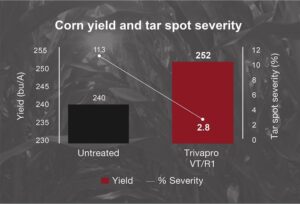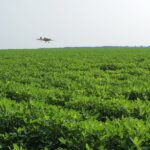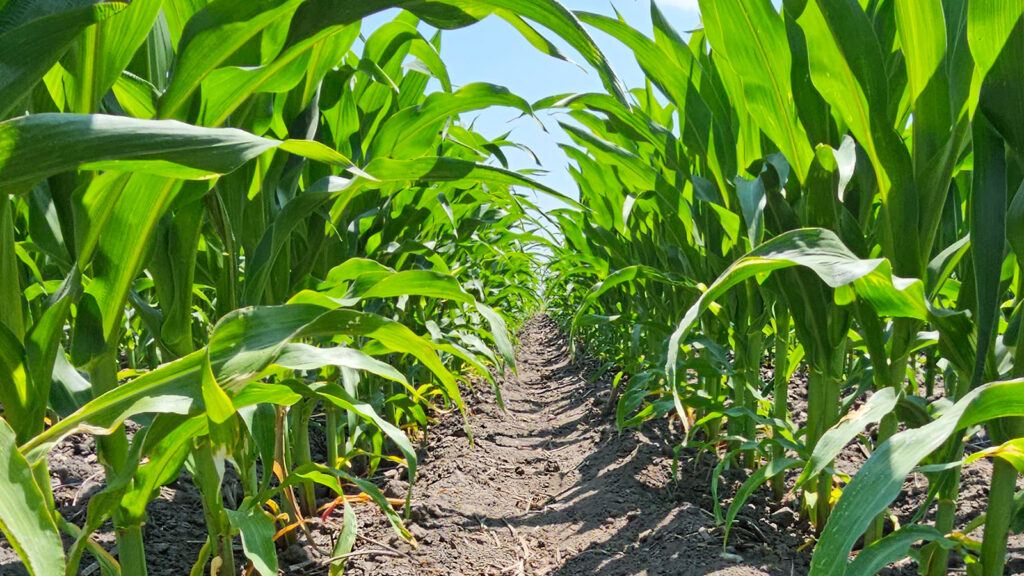Stay a Step Ahead of Tar Spot With Trivapro Fungicide
As excessive rain raises the threat of tar spot across the Midwest, a proven preventive fungicide can help protect corn acreage.

The growing season has just kicked off, but it’s already been a tough few weeks for Midwest growers. Late snow and/or excessive rain in many areas has delayed planting and caused a higher risk for corn diseases.
Experts are saying that the “bomb cyclone” that devastated the Midwest in March likely caused tar spot—a new yield-robbing corn disease in the U.S.—to spread across several states in the region. On top of the devastating rain, fewer growers are planting soybean acres this year. With more corn-on-corn being planted, it’s more important than ever for growers to protect their acres from tar spot before the disease has a chance to significantly impact yield and return on investment (ROI) potential.
“Tar spot is a dangerous disease because the fungus that causes it can infect the crop 14 to 40 days before symptoms appear,” says Eric Tedford, Ph.D., fungicide technical product lead at Syngenta. “Knowing the weather we’ve had this year, areas that had tar spot last year and counties nearby will be at higher risk. Growers should be prepared with a strong preventive fungicide to get ahead of the disease before it infects their corn.”
Don’t Get Caught Off Guard by Tar Spot
Areas that have experienced several inches of rain, cool temperatures and high relative humidity have an increased risk of tar spot developing, which is why tar spot has shown up mostly in the Midwest for now, with confirmed cases in Wisconsin, Illinois and Iowa as of 2018.
Before arriving in the U.S., tar spot was only found in Latin America. But U.S. growers can expect a similar progression:
- Phyllachora maydis, the fungus that causes tar spot, thrives when more than seven hours of leaf wetness occurs overnight.
- When favorable weather conditions occur, tar spot can overwinter, making it a threat to growers year after year if left untreated.
- Only 20 percent to 25 percent of overwintering spores will survive, but tar spot can produce millions of spores when conditions are right, meaning a small percentage of spores can still cause significant damage.
- Tar spot spreads when spores are carried by wind or rain, and current weather patterns have created a higher risk for widespread infection across the Midwest.
Growers who are planting corn-on-corn this year should scout early and often for tar spot, Tedford advises. “There’s a high risk of earlier infection if the disease pathogen overwinters and conditions are favorable for development,” he says. “If growers get behind on tar spot, they won’t be able to stop it.”
Plan Ahead to Stay Ahead
The first visual symptoms of tar spot appear as dark spots on the surface of the leaf. But in most cases, the plant is infected long before symptoms are visible.
“With a 14 to 40 day latent period, it’s crucial to get ahead of tar spot with a preventive fungicide,” says Tedford.
When tar spot is left untreated, it negatively affects the plant’s ability to photosynthesize, causing leaves to brown and die early, which can result in reduced yield and ROI potential. While results vary by region, 2018 research from Syngenta found that 10 percent to 15 percent disease severity resulted in about 10 to 15 bushels per acre (bu/A) of corn lost. Severity does not generally get above 40 percent to 50 percent because the plant dies, but tar spot can easily cause yield losses up to 60 bu/A.
Tar spot may be a new disease, but it’s clear that it’s one that should be taken seriously this season, especially if wet conditions continue in the Midwest. Trivapro® fungicide, is a proven, effective management tool for tar spot. The three robust active ingredients in Trivapro, including Solatenol® fungicide, provide preventive and curative disease control and plant-health benefits, helping growers stay a step ahead of tar spot.
In a University of Wisconsin trial, Trivapro stood out as a proven performer for tar spot control without sacrificing yield.

“For growers who are concerned about tar-spot infection early in the season, I recommend two sprays of Trivapro at V4 to V8 timing and VT/R1,” Tedford says. “For those in a lower-risk area, one spray of Trivapro at VT/R1 can keep tar spot severity low.”
Growers have relied on Trivapro to protect corn from multiple sources of stress and to control other corn diseases like gray leaf spot, rusts and Northern corn leaf blight. Now, they can rely on it for long-lasting tar spot control, allowing their crop to reach its full potential, no matter what weather conditions may arise.























